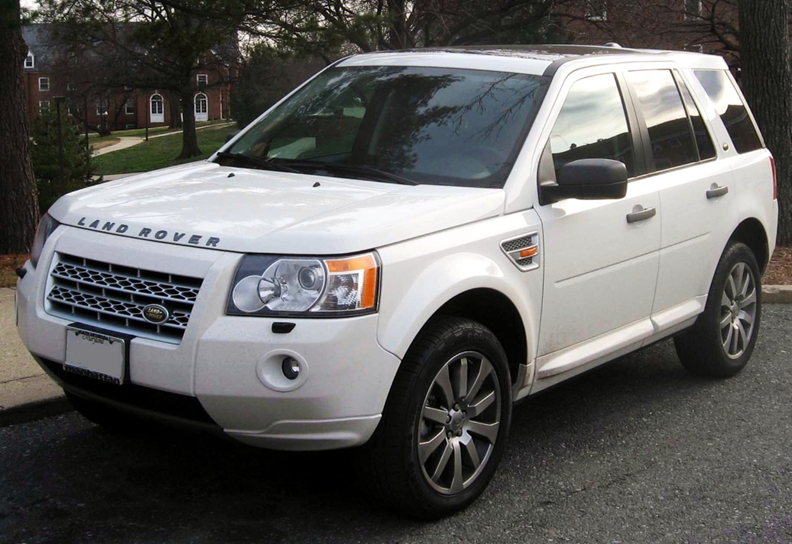As Ford struggles to make Lincoln its only legitimate luxury brand, one would have to ask if the company has any seller’s remorse over getting rid of Land Rover and Jaguar in 2008 to Indian automaker Tata Motors, which is doing quite well with the brands.
It’s very tough, of course, to get any Ford executives to cop to remorse. The last time we asked Ford CEO Alan Mulally if he had any regrets, his answer: “Absolutely not, and not for a minute. We are focusing like a laser on Ford brand globally, and those businesses did not fit the plan.”
Still, here are some compelling numbers to ponder. This year, Land Rover in on track to sell 346,000 vehicles worldwide, while Jaguar is on track to sell about 75,000. The business earned $2.5 billion in its last reporting year. Lincoln, meantime, sold fewer than 39,000 vehicles in the first six months of this year in the U.S. It does not have sales to speak of outside the U.S. Ford received $2.3 billion for Jaguar/Land Rover from Tata.
In recent months, I have driven two new products from Jaguar/LandRover–the new Jaguar F-Type two-seatersports car and the new Range Rover Sport. [See Range Rover Sport review here, and F-Type review here]. Both experiences were exceptional, and the Range Rover Sport is not only the best Land Rover I have ever driven on road or off, but it beats just about every other luxury SUV I have ever driven for sheer driving enjoyment. I am not alone. Reviews for the new car have been extremely high. Indeed, J.D. Power’s recent APEAL study, which ranks models and brands based on how well their owners like their cars in the first 90 days of ownership put the Land Rover Range Rover #1 among all new vehicles–car, truck or SUV.
The same can hardly be said of Lincoln. Despite Ford’s best efforts, its most recent product launch for Lincoln, the MKZ sedan [see my review of the MKZ here], has been a botch, with supply of vehicles slow to follow the advertising that Ford kicked off in last February’s Super Bowl. More troubling, though, is the lack of focus and sizzle in any of the Lincoln marketing this year. Lincoln’s other models; MKS sedan, MKT crossover, NavigatorSUV and MKX crossover are dead in the water. Lincoln will be lucky to post 80,000 in total sales this year, and spread over five models with heavy discounting helping them out the dealership door.
A few months ago, I asked Land Rover design chief Gerry McGovern what the biggest difference is between Ford ownership and Tata’s. “With Tata, we know what the plan is. Tata is very focused on making both brands profitable and successful, and there is commitment. With Ford, things drifted year to year.”
That’s a shame. Mulally’s decision to focus on the Ford brand globally was not wrong. The company is much healthier than it was when he arrived in 2006. Shortly after arriving, he referred to Land Rover, Jaguar, as well asVolvo and Aston Martin, which Ford also sold, as “expensive hobbies.” They lost big money, and detracted from the company’s focus on making Ford brand healthy worldwide. But it really came down to Ford, in Mulally’s view, not having enough executive talent and attention to devote to fixing Jag and Land Rover the way Tata has with, by the way, many of the same executives that Ford had in place.
But it feels like some more forethought might have gone into keeping Jag and Land Rover in the Ford house, as the investments to fix two globally known and respected brands seems much cheaper in the long run than trying to resurrect Lincoln from the dead, try and sell it to a younger generation of luxury buyers and try to expand Lincoln in emerging markets like China and the Middle East.
Indeed, now that the heavy lifting around fixing Ford is done, it’s difficult not to think that Ford perhaps was hasty in jettisoning Land Rover and Jaguar. The $2.5 billion Tata paid looks awfully cheap now; less than two years of earnings based on the most recent results. Meanwhile, Lincoln is sucking up a $2 billion product investment that seems a long shot to pay off as too few people can imagine themselves aspiring to a Lincoln, and passing over such brands as BMW, Lexus, Acura, Mercedes-Benz, Audi and Cadillac.
AOL Autos/Autoblog editors just convened a vote on the ten “most iconic” vehicles of the last fifty years. Nearly all voters put a Land Rover Range Rover or Defender on the list, as well as a Jaguar E-Type. There was not one Lincoln discussed.
Having a brand, and designs that are recognized globally is incredibly valuable. During my stay in the Normandy region of France this month, I got to talking with a 24-year old woman from Orval, France about cars and the ones she likes best. An Opel Astra owner, Agate Simone volunteered that her favorite car on the road these days is theLand Rover Range Rover Evoque, which was AOL Autos Truck of the Year for 2011. Out of everything on the market, this French woman working her way up a corporate ladder chose the Evoque. Can anyone find me the same car buyer in the U.S. or anywhere who is thinking that about a Lincoln?
Indeed, the Evoque, designed and engineered at Land Rover when it was owned by Ford, is the biggest profit driver for the company right now, with over 120,000 expected to be sold this year worldwide.
Yes, it feels a bit like Ford sold these brands off a bit too soon.



